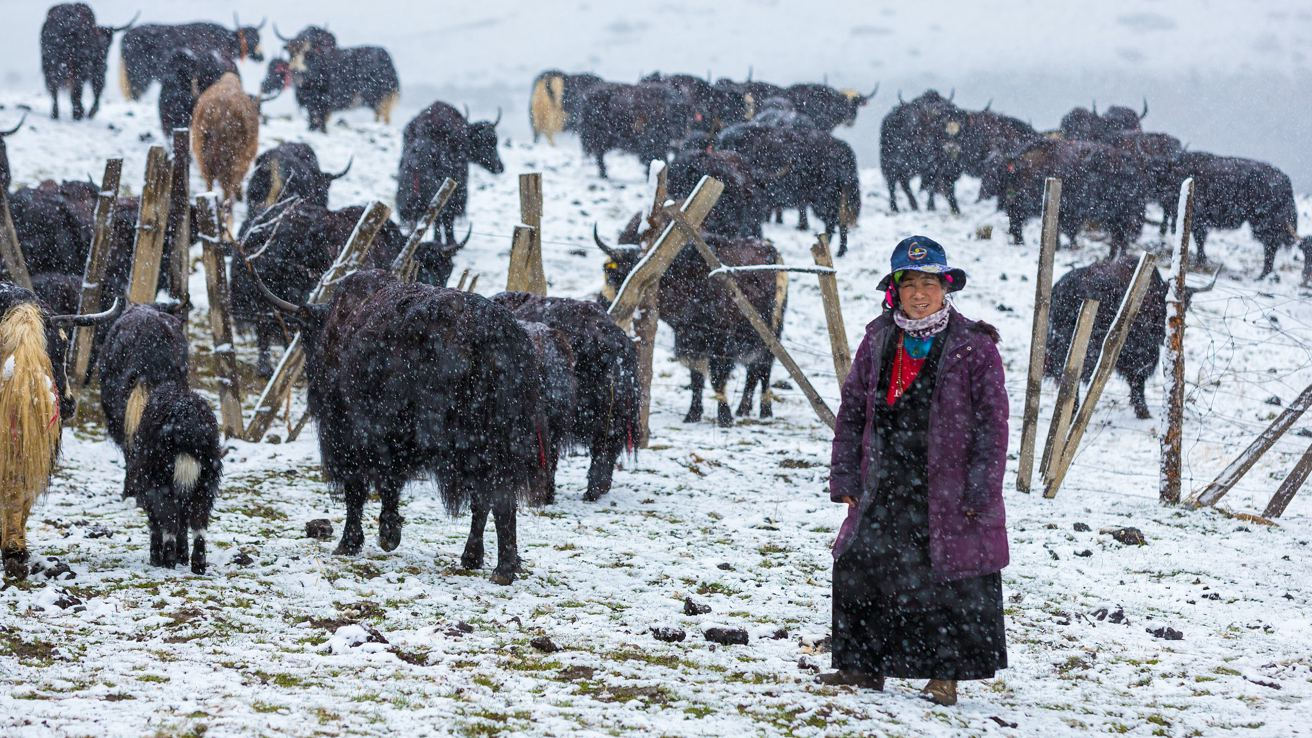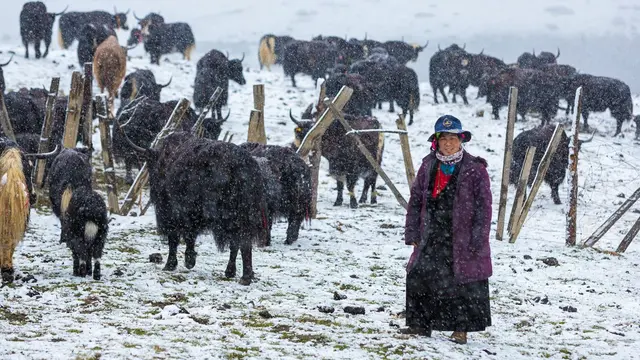
A Tibetan woman herds yaks in the Garze Tibetan Autonomous Prefecture of Sichuan. /VCG
Southwest China's Sichuan Province has declared that all its areas inhabited by the Tibetans – two prefectures and one county – have been removed from the country's list of impoverished counties.
It comes after an announcement made by local authorities on Tuesday that another 16 counties in the Tibetan-inhabited areas had got rid of absolute poverty. Previously, the province announced the first group of 16 counties out of poverty.
Sichuan's Tibetan areas have a population of 2.17 million, over 46 percent of whom are the Tibetan people. They live in two prefectures, namely, the Aba Tibetan and Qiang Autonomous Prefecture, and the Garze Tibetan Autonomous Prefecture, and in Muli County of the Liangshan Yi Autonomous Prefecture.
Based on official data, in the past decade, a total of 47,000 km of roads have been built and rebuilt in the region. Nearly 100,000 farmers and herdsmen have moved into new houses and more than 300,000 people in the Tibetan areas have bid farewell to butter lamps.
The province has invested a total of 10.76 billion yuan (around 1.5 billion U.S. dollars) in special financial funds for poverty alleviation, and 28.694 billion yuan (around 4.1 billion U.S. dollars) in integrated financial funds for agriculture to shake off poverty in these areas.
The province has pledged to continue its policies to offer more job opportunities, and increase local people's income. Efforts will also be made to assure their living conditions so that they will not return back to poverty.
 简体中文
简体中文

